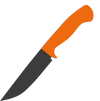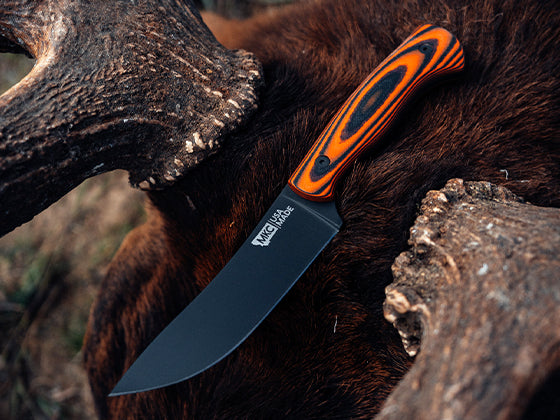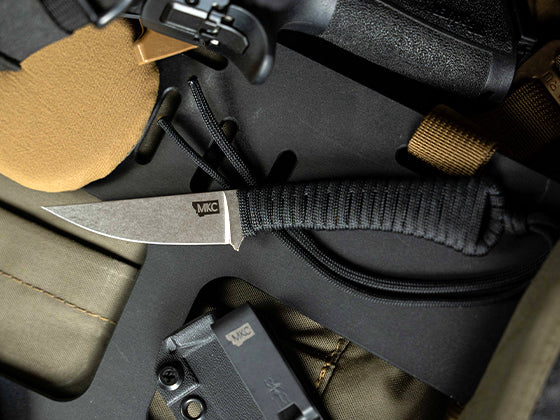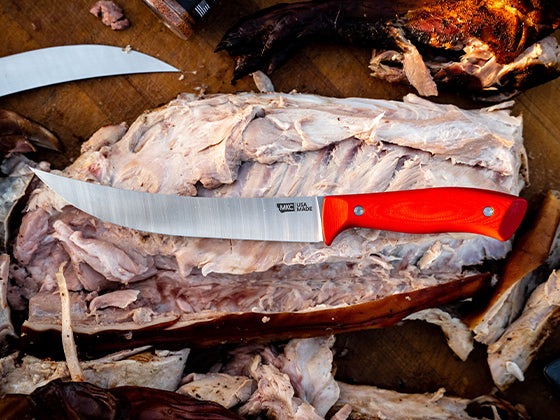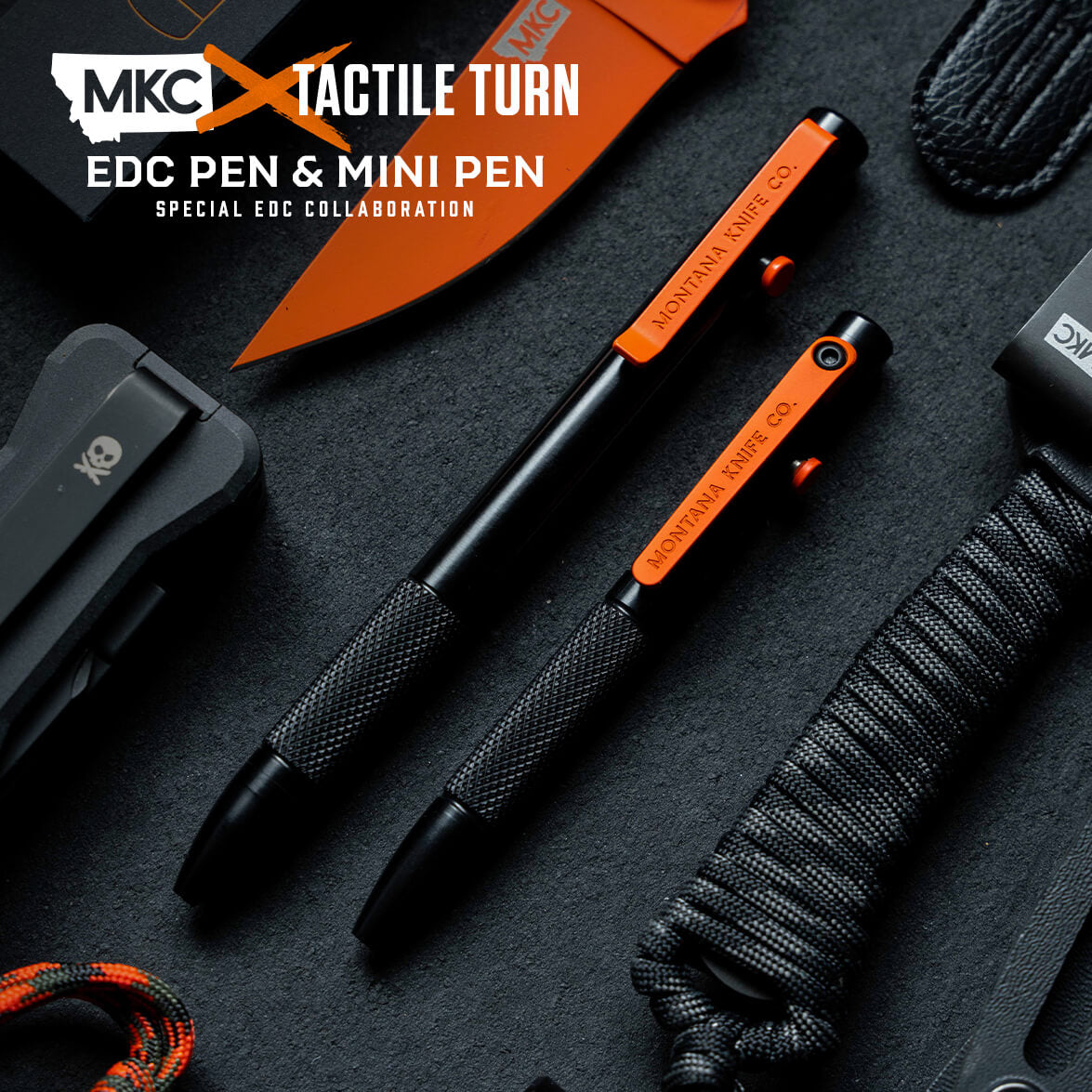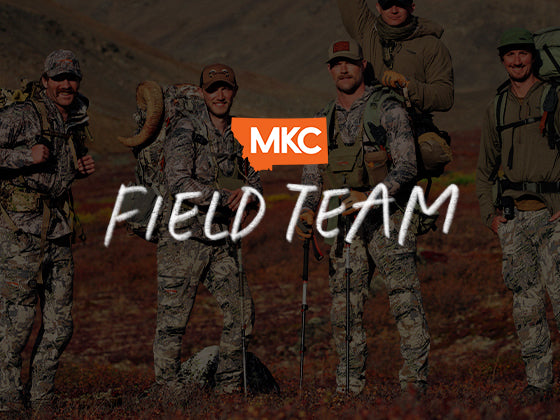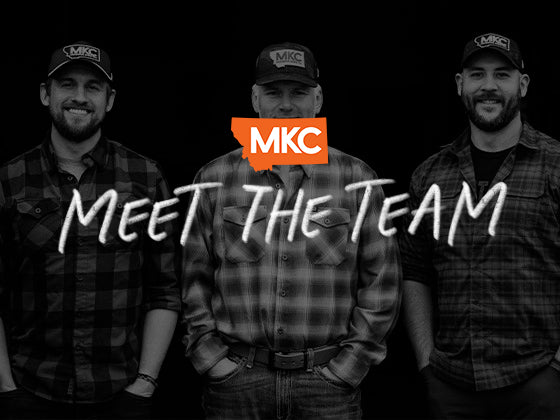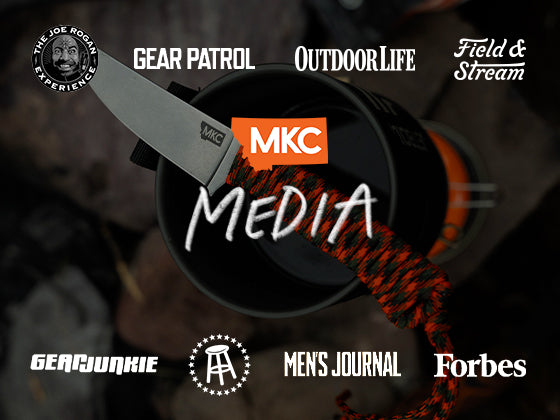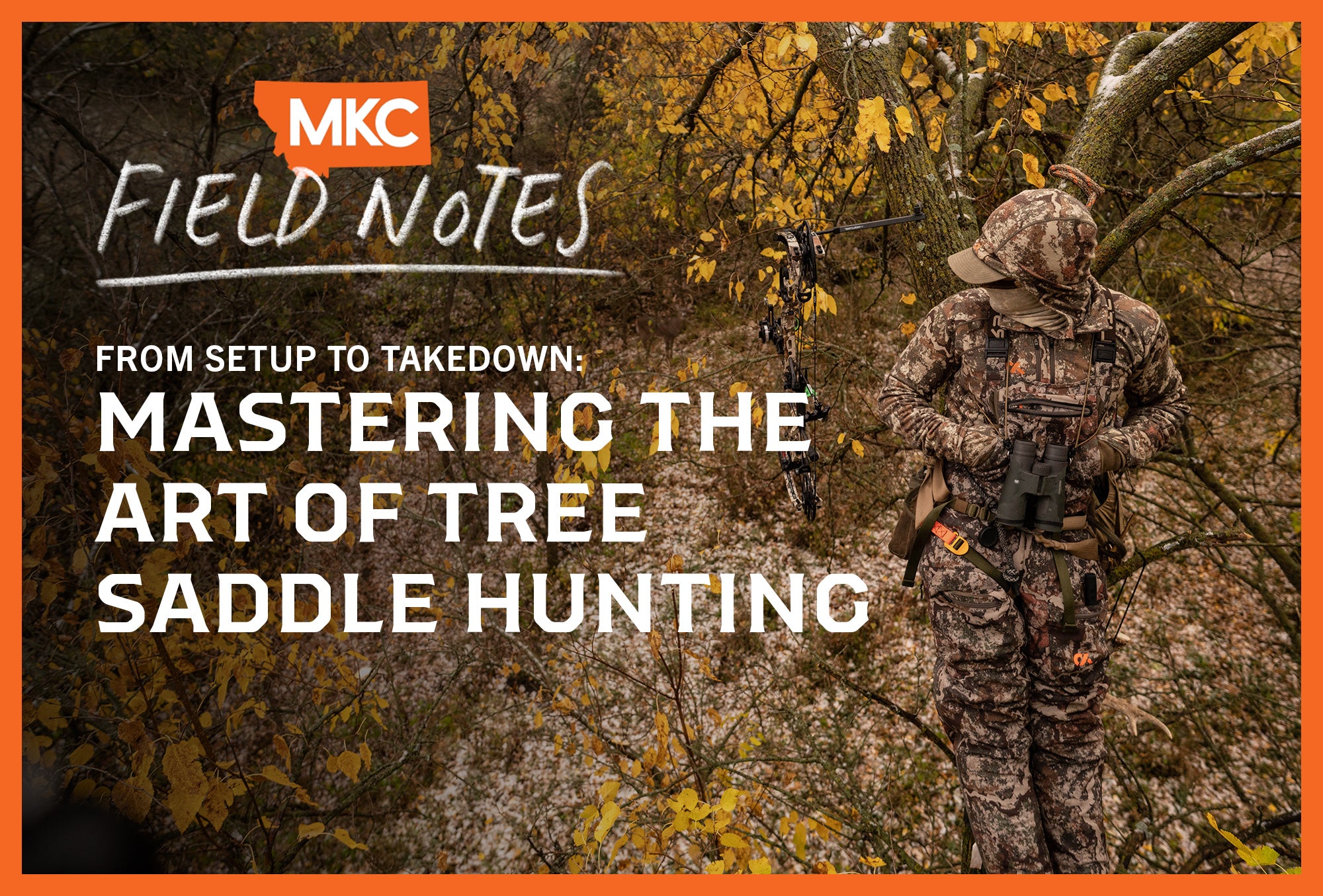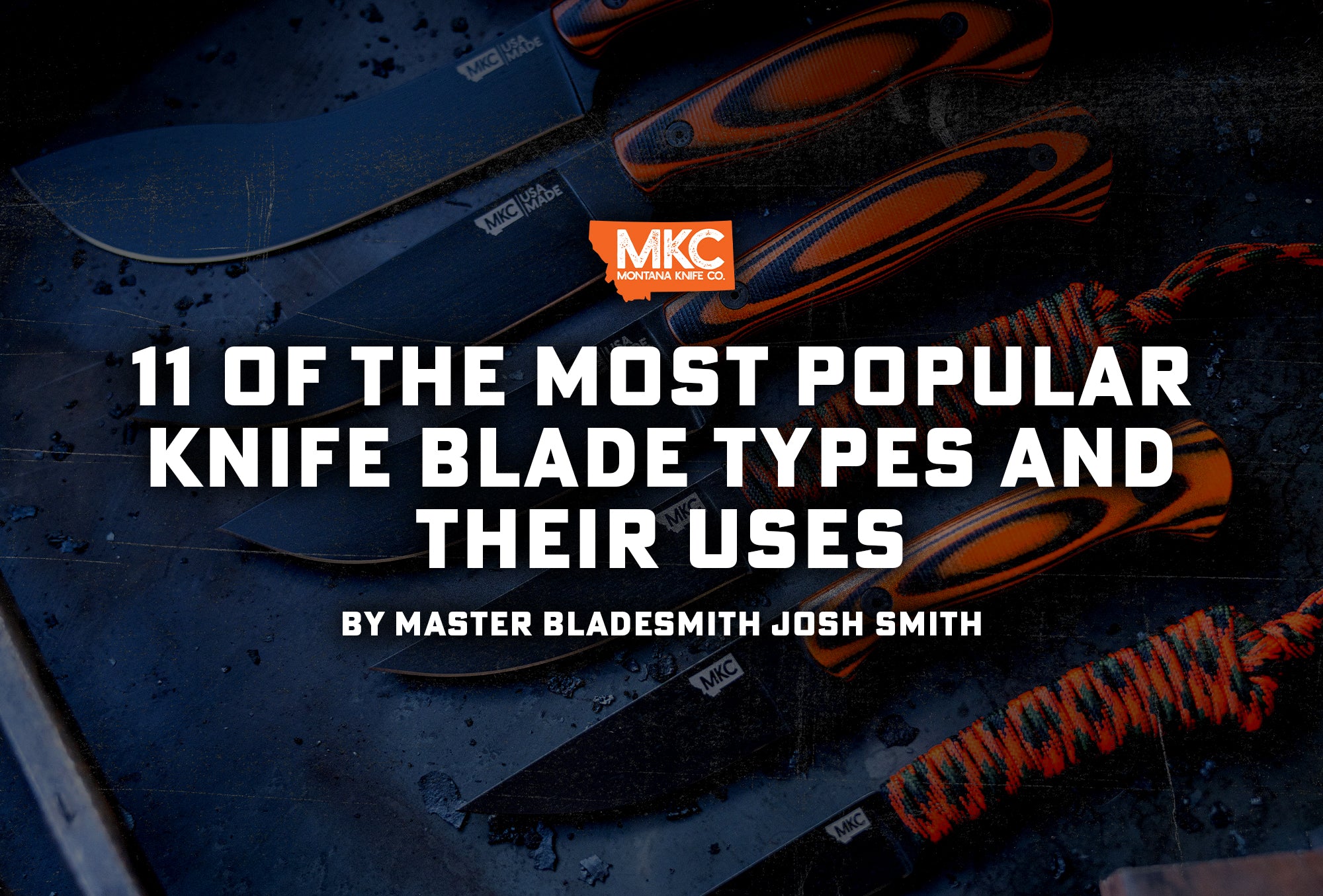What’s the first thing that goes through your mind after hitting your target? For me, it’s how to go about tracking it down. While my goal is always to get that perfect instant takedown, that’s not always the way the hunt pans out.
I’ve been bowhunting whitetail deer for decades, and if there’s one thing I’ve learned, it’s when in doubt, back out. Take some time and proceed cautiously. Sometimes a long or off-center shot takes time to show results. Patience is key!
The true test begins when your quarry has departed the immediate area. This is where your deer-tracking skills really shine. Let me teach you the art of tracking and retrieving deer.
Immediate Steps After the Shot: Follow the Blood Trail
The first steps you take depend on your confidence in your shot. This is why I recommend using lighted nocks, especially for new hunters.
Lighted nocks help you keep track of where you landed your shot, making it easier to locate and track the animal based on the blood trail. They also provide valuable clues about the shot placement, such as whether it was a solid hit or if there are signs of fat or hair, helping you determine your next steps.
Even if you’re confident that you landed a perfect shot, be careful as you’re deer tracking. Move stealthily to avoid startling the animal and be ready to assess its condition. A follow-up shot may be necessary if you find your target still alive.
The key to a successful whitetail hunt is to be cognizant of your shot placement. This will give you a window into your quarry’s condition in case of an off-shot. For example, if the hit lands too far back, the animal may take longer to expire.
Having an expert or mentor you can ask for help is an enormous boon, too. Ask if they’re available for a quick video call, and if not, take a video of your kill and send it their way. An experienced bowhunter can interpret the results of your shot placement and tell you what comes next.
Finally, pay close attention to the type of blood you see after making your shot. Bubbly blood indicates a lethal shot and suggests a vital organ hit, while watery, greenish blood may indicate an intestinal or stomach shot.
If you’ve made a stomach shot, your deer could take up to 24 hours to expire. More on this later.
Tools and Tech for Deer Tracking
Today’s hunters have access to more technology for deer tracking than ever. Some places use dogs or thermal drones to track escaped targets.
However, before you pursue either option, look into local laws in your hunting area. Different areas allow (and outlaw) different tracking methods.
If your hunting area doesn’t allow recovery dogs or drones, it’s up to you to follow the blood trail. This can be challenging, especially in open terrain or grass, but I have a few tips that can help:
- If you have a hunting partner, have them stand on the last blood drop you can find. If you don’t have a partner, use a lighted nock arrow or flagging tape to mark its location instead.
- If you pack binoculars, don’t be afraid to use them like magnifying glasses to help identify blood. Binoculars can also help you find your downed target, so don’t leave home without them! The further you are when you spot your target, the lower your chance of spooking it.
- Even old-school hunters can benefit from new technology. Apps like HuntWise can help you track deer paths and grid search efficiently so you don’t get turned around.

Understanding Different Types of Blood
Your arrow tells you a lot about the hit. If it’s covered in bright, bubbly blood, that’s a good sign. However, if the blood is dark or the arrow is covered in stomach contents, you’ll likely need to give the animal more time.
Here’s a quick guide to interpreting blood trails:
- Bright red blood: Indicates a muscle hit
- Bright red blood with bubbles: Suggests a hit to a central vein or artery
- Pinkish, foamy blood: Lung hit
- Dark crimson blood: Liver hit
- Watery blood: Paunch or non-vital hit
- Yellow, green, or foul-smelling blood: Gut shot
Liver shots can be unpredictable. A whitetail deer that’s taken a liver shot can expire in minutes or hours. Intestinal and stomach shots, on the other hand, take the longest to expire.
I recommend waiting 8–10 hours to start deer tracking after an intestinal hit. You can use mechanical broadheads to speed up that expiration time.
It can be difficult to see the color and consistency of blood once it hits the ground, so look at what’s on your arrow when possible.
A few seasons ago, I made a marginal hit on a doe just before she disappeared over a ridge. The arrow was covered in dark blood, and there was very little blood on the ground. I decided to back out and wait four hours before taking up the trail.
When I returned, I found the doe piled up just over the ridge, not 50 yards from where I’d last seen her. Had I rushed in, I might have bumped her and lost the opportunity to recover her.
Common Mistakes (and How to Avoid Them!)
Newbie archers often try to push their limits by taking shots beyond their effective range. While I appreciate this go-getter attitude, it’s much better to start small.
I learned this lesson the hard way on a hunt in Texas. I took a shot at a big buck that I thought was within my range, but he ducked the string, and I hit him high in the back.
I spent the better part of a day trying to recover that deer, but I never found him. Losing that deer sickened me to my core, and I swore I’d never do it again. These days, I limit my shots to my effective range and wait for the perfect opportunity.
When in doubt, talk to an experienced bow hunter to get a better idea of what you can handle. The most critical factors in setting limits are poundage, arrow speed, broadhead type, and your target animal’s behaviors.
Once you know your gear limits, focus on perfecting your angles. As a beginner, your shots should always be broadside or quartering-away. I also can’t stress enough the importance of using lighted nocks to track where your arrow hit the animal.
Our Ethical Duties: Ensuring Humane, Successful Hunts
It’s our duty as hunters to be stewards of the animals we hunt and to limit their suffering as much as possible. An ethical hunter should always approach unknown situations with caution. Rushing in, being loud, and bringing too many people with you risks bumping your deer out of the area.
If your quarry is hit and bedded down, wait before pursuing it to avoid causing further distress. It’s tempting to rush in and claim your deer, but a methodical and slow approach is always better.
Be prepared to take another shot if needed and back out if you’re unsure. Careful deer tracking is the best way to ensure a humane and successful hunt.
Remember, tracking should be a slow, quiet, and methodical process. Bring only the help you need, and always prioritize the animal’s welfare over your desire to recover it quickly. By doing so, you’ll not only improve your chances of success but also ensure the meat is of the highest quality.
I hope these tips help you this season and for many more to come. Remember, every tracking job is an opportunity to learn and improve. Embrace the challenge, stay positive, and never give up.

with John Dudley, Decorated Professional Archer and Founder of Nock On Archery













